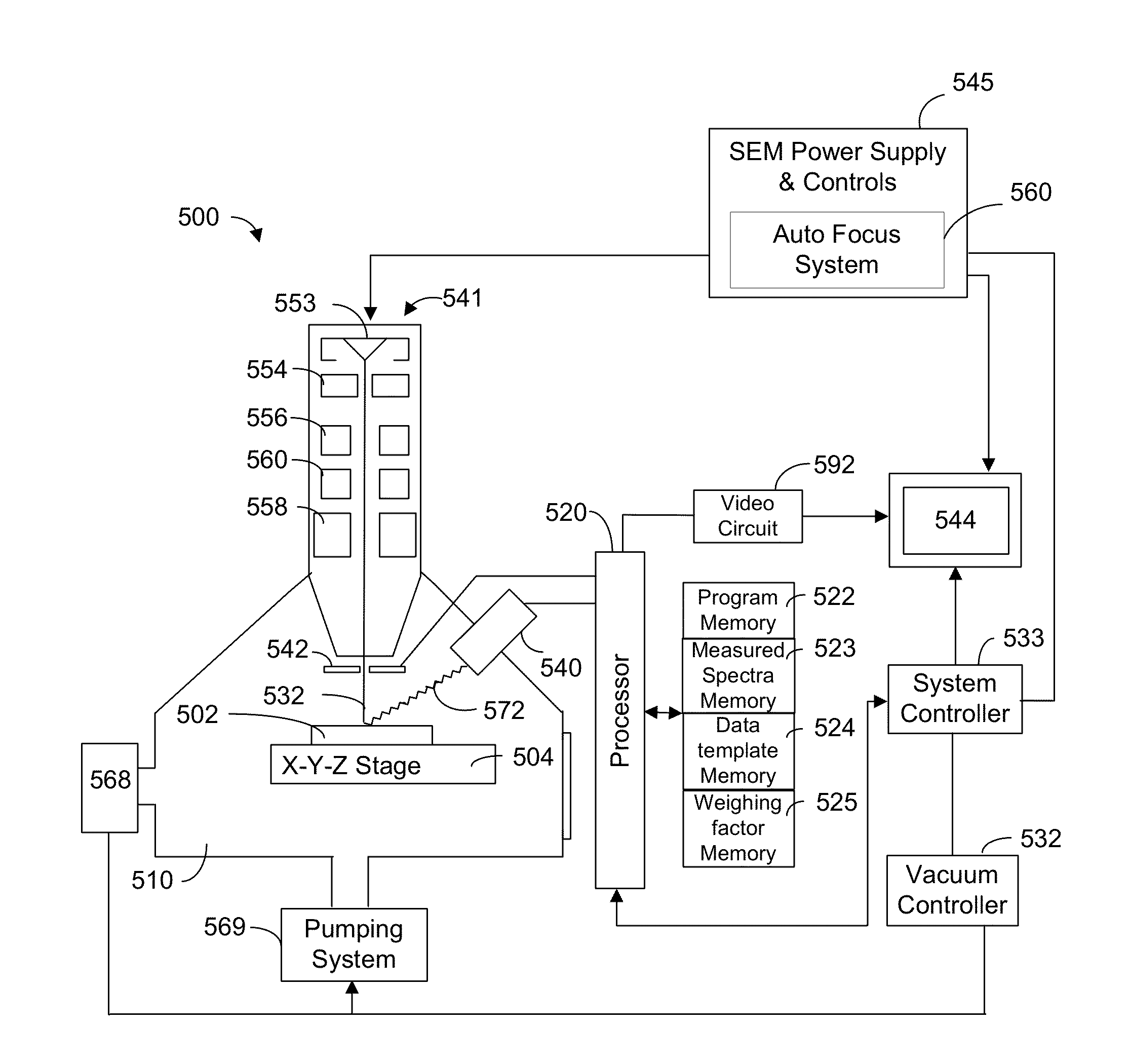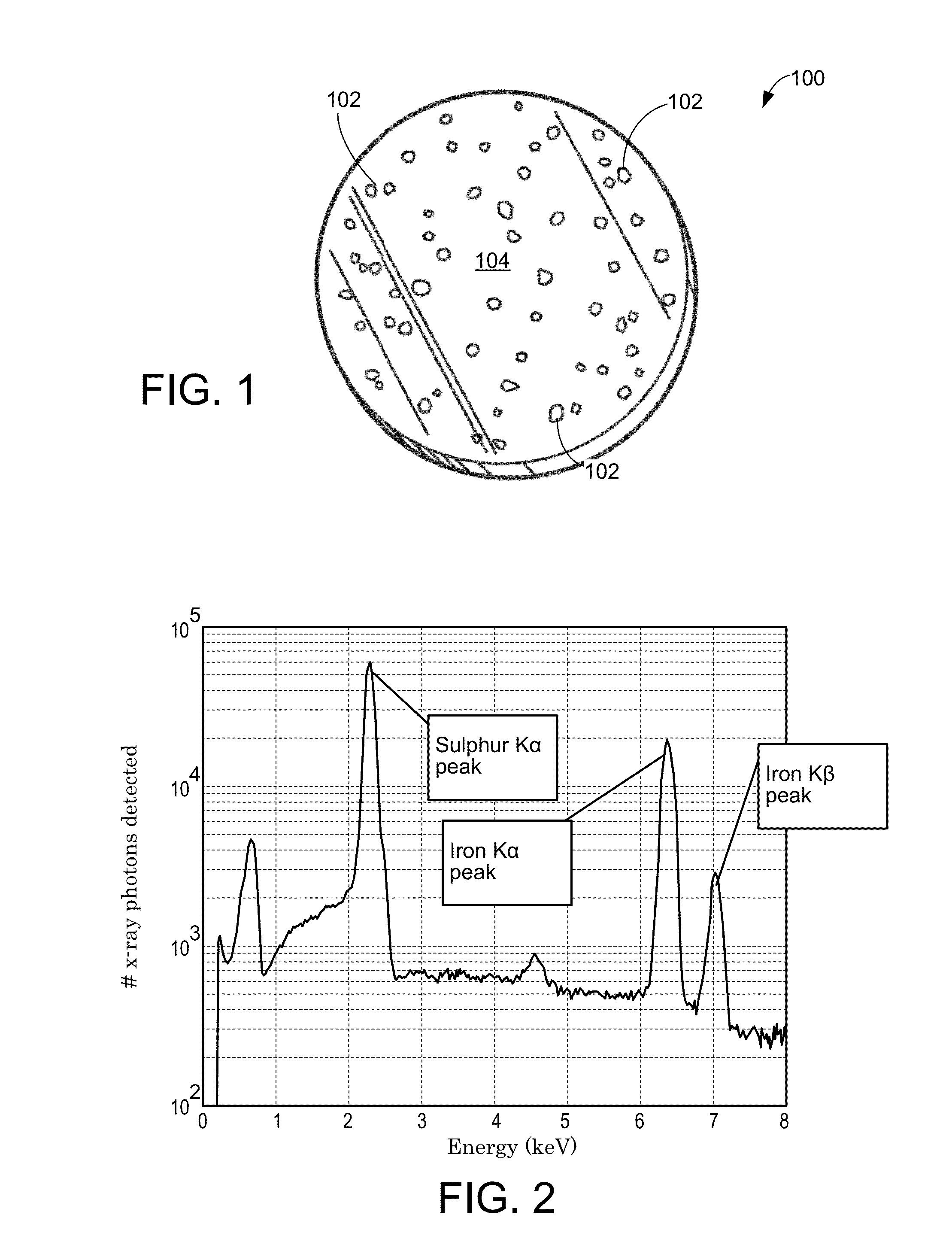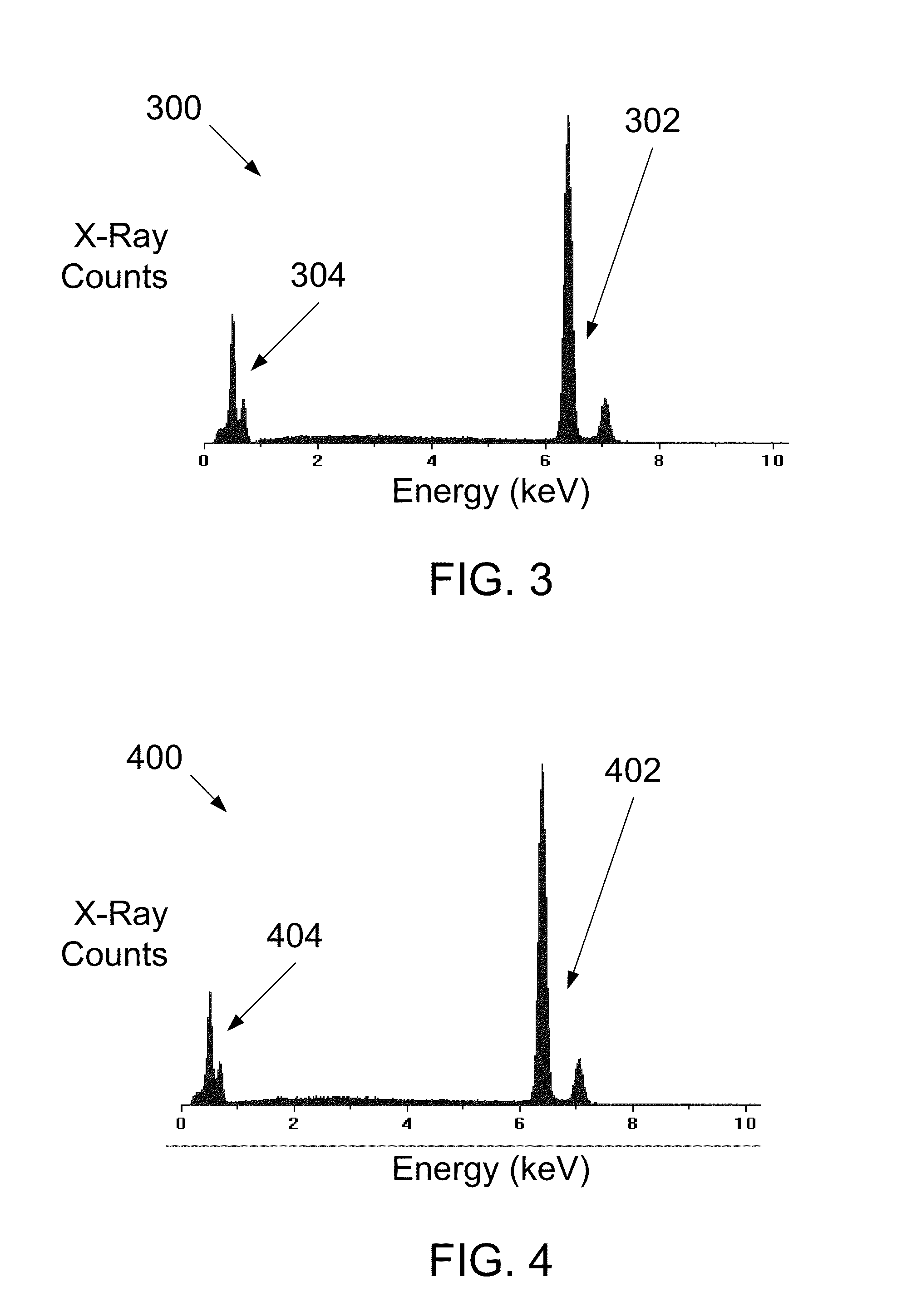Process for Performing Automated Mineralogy
a mineralogy and automatic technology, applied in the field of automatic mineralogy, can solve the problems of difficult automatic mineralogy applications, difficult to distinguish hematite and magnetite, and difficult to accumulate x-ray spectrum
- Summary
- Abstract
- Description
- Claims
- Application Information
AI Technical Summary
Benefits of technology
Problems solved by technology
Method used
Image
Examples
Embodiment Construction
[0021]Embodiments of the present invention include a method for automatically configuring a scanning electron microscope (SEM)
[0022]In the MLA approach, mineral phases are first distinguished by their BSE grayscale levels during an on-line segmentation operation and then by their energy dispersive x-ray (EDX) spectrum. Minerals associated with a similar BSE values are segmented into a single phase. The results of a BSE mineral analysis determines the mineral phases and boundaries in a sample. This method of image segmentation allows BSE detectors to outline the regions of varying compounds in a sample which provides an easy means of separating the compounds and determining the overall content of a sample.
[0023]FIG. 8 shows a segmented BSE histogram reflecting standard BSE calibration. Standard BSE calibration is set to that the mounting media (resin) is kept at backscatter brightness values below 15, and gold at value of 250. This setting covers the BSE range of all common minerals....
PUM
| Property | Measurement | Unit |
|---|---|---|
| electron microscope | aaaaa | aaaaa |
| composition | aaaaa | aaaaa |
| distance | aaaaa | aaaaa |
Abstract
Description
Claims
Application Information
 Login to View More
Login to View More - R&D
- Intellectual Property
- Life Sciences
- Materials
- Tech Scout
- Unparalleled Data Quality
- Higher Quality Content
- 60% Fewer Hallucinations
Browse by: Latest US Patents, China's latest patents, Technical Efficacy Thesaurus, Application Domain, Technology Topic, Popular Technical Reports.
© 2025 PatSnap. All rights reserved.Legal|Privacy policy|Modern Slavery Act Transparency Statement|Sitemap|About US| Contact US: help@patsnap.com



